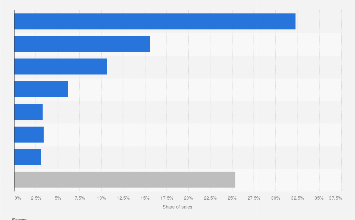Is Isuzu Motors (TSE:7202) A Risky Investment?

Warren Buffett famously said, ‘Volatility is far from synonymous with risk.’ So it seems the smart money knows that debt – which is usually involved in bankruptcies – is a very important factor, when you assess how risky a company is. As with many other companies Isuzu Motors Limited (TSE:7202) makes use of debt. But should shareholders be worried about its use of debt?
When Is Debt A Problem?
Debt and other liabilities become risky for a business when it cannot easily fulfill those obligations, either with free cash flow or by raising capital at an attractive price. If things get really bad, the lenders can take control of the business. However, a more usual (but still expensive) situation is where a company must dilute shareholders at a cheap share price simply to get debt under control. By replacing dilution, though, debt can be an extremely good tool for businesses that need capital to invest in growth at high rates of return. When we think about a company’s use of debt, we first look at cash and debt together.
Check out our latest analysis for Isuzu Motors
What Is Isuzu Motors’s Debt?
As you can see below, at the end of March 2024, Isuzu Motors had JP¥523.9b of debt, up from JP¥482.9b a year ago. Click the image for more detail. However, it also had JP¥400.8b in cash, and so its net debt is JP¥123.1b.
How Strong Is Isuzu Motors’ Balance Sheet?
The latest balance sheet data shows that Isuzu Motors had liabilities of JP¥1.08t due within a year, and liabilities of JP¥520.8b falling due after that. Offsetting these obligations, it had cash of JP¥400.8b as well as receivables valued at JP¥641.1b due within 12 months. So its liabilities total JP¥562.1b more than the combination of its cash and short-term receivables.
While this might seem like a lot, it is not so bad since Isuzu Motors has a market capitalization of JP¥1.43t, and so it could probably strengthen its balance sheet by raising capital if it needed to. However, it is still worthwhile taking a close look at its ability to pay off debt.
We use two main ratios to inform us about debt levels relative to earnings. The first is net debt divided by earnings before interest, tax, depreciation, and amortization (EBITDA), while the second is how many times its earnings before interest and tax (EBIT) covers its interest expense (or its interest cover, for short). The advantage of this approach is that we take into account both the absolute quantum of debt (with net debt to EBITDA) and the actual interest expenses associated with that debt (with its interest cover ratio).
Isuzu Motors has a low debt to EBITDA ratio of only 0.30. But the really cool thing is that it actually managed to receive more interest than it paid, over the last year. So there’s no doubt this company can take on debt while staying cool as a cucumber. Also good is that Isuzu Motors grew its EBIT at 16% over the last year, further increasing its ability to manage debt. The balance sheet is clearly the area to focus on when you are analysing debt. But ultimately the future profitability of the business will decide if Isuzu Motors can strengthen its balance sheet over time. So if you’re focused on the future you can check out this free report showing analyst profit forecasts.
Finally, while the tax-man may adore accounting profits, lenders only accept cold hard cash. So the logical step is to look at the proportion of that EBIT that is matched by actual free cash flow. Looking at the most recent three years, Isuzu Motors recorded free cash flow of 45% of its EBIT, which is weaker than we’d expect. That weak cash conversion makes it more difficult to handle indebtedness.
Our View
Happily, Isuzu Motors’s impressive interest cover implies it has the upper hand on its debt. And the good news does not stop there, as its net debt to EBITDA also supports that impression! All these things considered, it appears that Isuzu Motors can comfortably handle its current debt levels. Of course, while this leverage can enhance returns on equity, it does bring more risk, so it’s worth keeping an eye on this one. Given Isuzu Motors has a strong balance sheet is profitable and pays a dividend, it would be good to know how fast its dividends are growing, if at all. You can find out instantly by clicking this link.
When all is said and done, sometimes its easier to focus on companies that don’t even need debt. Readers can access a list of growth stocks with zero net debt 100% free, right now.
Valuation is complex, but we’re helping make it simple.
Find out whether Isuzu Motors is potentially over or undervalued by checking out our comprehensive analysis, which includes fair value estimates, risks and warnings, dividends, insider transactions and financial health.
Have feedback on this article? Concerned about the content? Get in touch with us directly. Alternatively, email editorial-team (at) simplywallst.com.
This article by Simply Wall St is general in nature. We provide commentary based on historical data and analyst forecasts only using an unbiased methodology and our articles are not intended to be financial advice. It does not constitute a recommendation to buy or sell any stock, and does not take account of your objectives, or your financial situation. We aim to bring you long-term focused analysis driven by fundamental data. Note that our analysis may not factor in the latest price-sensitive company announcements or qualitative material. Simply Wall St has no position in any stocks mentioned.
Valuation is complex, but we’re helping make it simple.
Find out whether Isuzu Motors is potentially over or undervalued by checking out our comprehensive analysis, which includes fair value estimates, risks and warnings, dividends, insider transactions and financial health.
Have feedback on this article? Concerned about the content? Get in touch with us directly. Alternatively, email editorial-team@simplywallst.com



